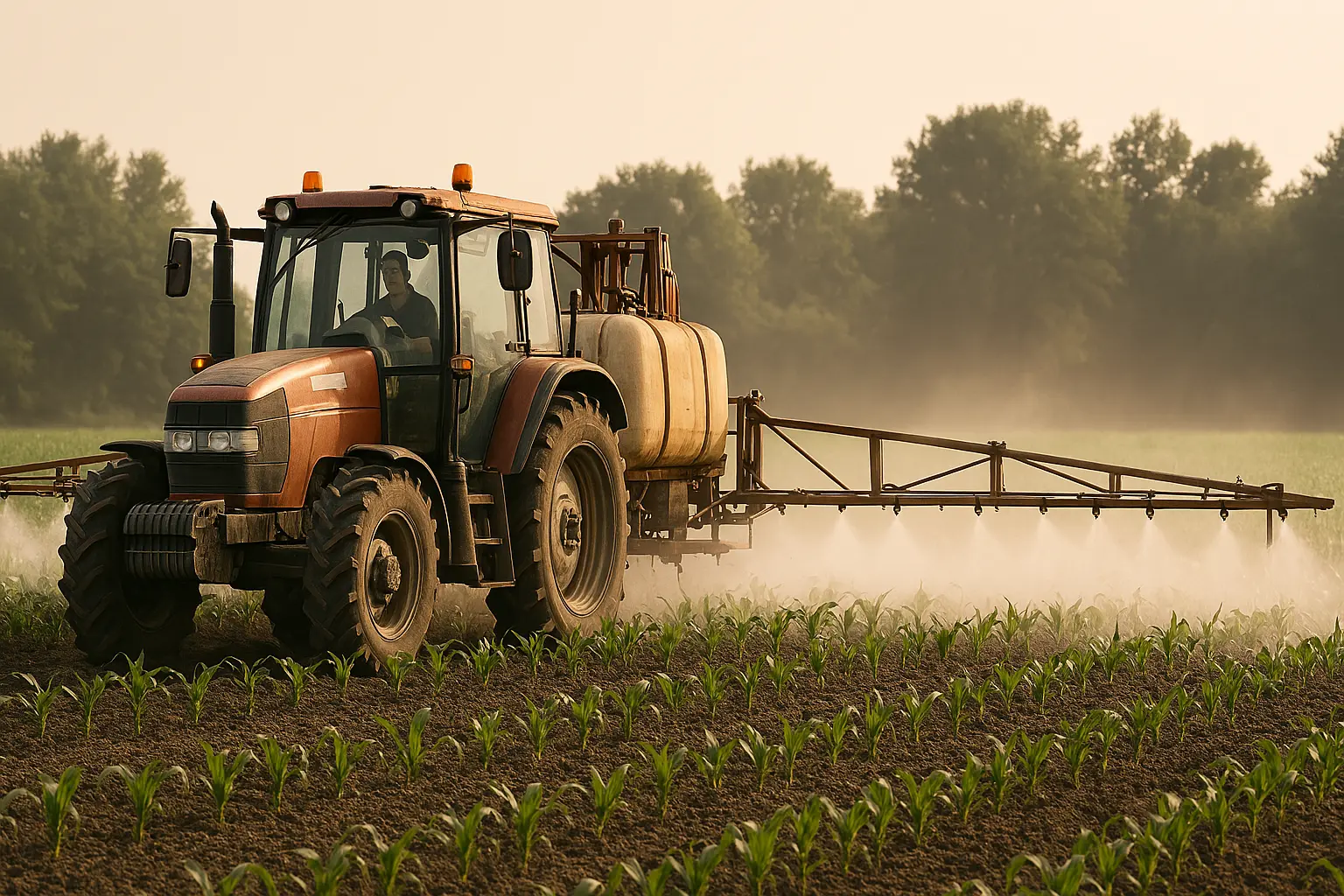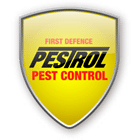Imidacloprid in Agriculture: Benefits and Risks

Imidacloprid in Agriculture: Benefits and Risks
Imidacloprid might not be a household word, but if you’re interested in how our food is grown, it’s worth knowing about. This pesticide is widely used on farms to protect crops from insect pests – but it’s also the subject of debate when it comes to bees, the environment, and safety. In this article, we’ll explore what imidacloprid is, why farmers use it, the benefits it provides, and the risks and concerns associated with it. Chances are you’ve heard questions like, “Does it harm bees?”, “Can it get into our water or food?”, or “Are there safer alternatives?” Here, we’ll answer those questions in a balanced, approachable way.
What is Imidacloprid?
Imidacloprid is an insecticide that was designed to mimic nicotine – the natural chemical found in tobacco plants that is toxic to insects.
In fact, imidacloprid belongs to the neonicotinoid class of insecticides, which essentially means “new nicotine-like” chemicals.
These chemicals target the nervous system of insects, causing paralysis and death, but are engineered to be much more selective for insects than for mammals. Imidacloprid was first introduced in the 1990s and quickly became one of the most widely used insecticides in the world.
How it Works?
How it works: Imidacloprid is a systemic insecticide, meaning plants can absorb it and transport it throughout their tissues.
Farmers can apply it in various ways – as a spray, soil treatment, or even as a seed coating – and as the plant grows, the chemical spreads into leaves, stems, and flowers. When a pest insect like an aphid or beetle tries to feed on the plant, it ingests the imidacloprid and affects the insect’s nervous system. Imidacloprid binds to insect nerve receptors (in particular, nicotinic acetylcholine receptors) much more strongly than it does in mammals or birds, so it’s highly toxic to insects but less so to larger animals.
This selectivity is one reason it was seen as a useful, “safer” pesticide for farmers to use compared to older chemicals. Imidacloprid is used on a huge variety of crops and settings – from corn and cotton fields, to orchards and vegetable gardens, and even on pets to control fleas.
In short, it’s a versatile bug-killer that has become a go-to tool in agriculture.

What are the concerns?
Why Are People Talking About Imidacloprid? (Common Questions & Concerns)
Because imidacloprid is so widely used, people naturally have questions and concerns about its safety and impact. Here are a few of the common questions that come up:
-
Is imidacloprid harming bees and other pollinators?
-
Does it contaminate soil or water (and end up in our drinking water)?
-
Is it safe to eat food grown with imidacloprid? What about residues on fruits and veggies?
-
How does it affect human health, and is it linked to any illnesses?
-
Are there alternatives to using imidacloprid that might be more eco-friendly?
These are all valid questions. In the sections below, we’ll tackle each of these concerns by looking at the benefits imidacloprid provides and the risks it poses, as well as what can be done as alternatives or precautions.
Benefits of Imidacloprid for Pest Control and Crop Protection
Despite the concerns, it’s important to understand why farmers and gardeners have found imidacloprid useful. There’s a reason it became popular in modern agriculture. Here are some of the key benefits:
-
Effective Pest Control: Imidacloprid is highly effective against a broad range of insect pests. It’s especially good at controlling sap-sucking insects like aphids, whiteflies, leafhoppers, and certain beetles that can wreak havoc on crops.
By controlling these pests, imidacloprid helps prevent the damage they cause to plants – such as stunted growth, wilt, or transmission of plant diseases. Healthier plants mean better yields.
-
Improved Crop Yields and Quality: Because it protects plants from significant pest damage, imidacloprid can lead to higher crop yields and better quality produce. For example, in some studies, using imidacloprid as a seed treatment or soil treatment has been shown to protect crops like wheat from early-season pests, resulting in improved yield compared to untreated fields.
Even if the yield gains are not dramatic in every case, the primary benefit is reducing crop losses during pest outbreaks. A field infested with aphids or beetles can suffer major yield reductions if not controlled; imidacloprid gives farmers a reliable way to avoid those losses.
-
Systemic Protection (Fewer Applications): Since imidacloprid is systemic, a single treatment (for instance, coating seeds or a soil drench at planting) can protect a plant for a long period as it grows. This can reduce the need for multiple spray applications. For farmers, that means greater efficiency – less time and labor spent spraying fields, and sometimes using less pesticide overall compared to spraying non-systemic chemicals frequently. It also means the pesticide is present inside the plant, which can be more targeted than spraying the whole field and hitting everything in the environment. From the farmer’s perspective, that’s a win for cost and convenience.
-
Reduced Human Toxicity Compared to Older Insecticides: Imidacloprid and other neonicotinoids were often seen as safer replacements for older classes of insecticides like organophosphates and carbamates. Those older chemicals are very toxic to humans and wildlife. Imidacloprid, by contrast, is far less acutely toxic to humans and other mammals – it doesn’t absorb well through skin and requires a much higher dose to be harmful, compared to what it takes to kill insects.
This means that, when used properly, the risk to farm workers and consumers is lower. The U.S. Environmental Protection Agency (EPA) has stated there’s no evidence that imidacloprid causes cancer in humans based on animal studies.
For farmers, knowing that a pesticide is effective yet not extremely dangerous to handle (with proper precautions) is a significant benefit.
Risk to Pollinators
While imidacloprid helps control pests, it can also affect beneficial creatures and the broader ecosystem. The biggest concern you’ve likely heard about is its impact on bees and other pollinators. Let’s break down the key risks:
-
Harm to Bees and Pollinators: Imidacloprid is highly toxic to honeybees, bumblebees, and many other pollinating insects
Even small doses can disorient bees or impair their ability to forage and return to the hive. Because imidacloprid is systemic, if it’s used on a flowering crop, small residues can end up in the nectar and pollen of those plants. Bees collecting pollen/nectar from treated plants can be exposed to the insecticide. Research findings have been mixed on how much real-world exposure hurts bee colonies, but the evidence of risk is strong enough that it prompted regulatory action in some places. A 2018 scientific review for the European Food Safety Authority (EFSA) concluded that most outdoor uses of neonicotinoids (including imidacloprid) posed a high risk to bees.
In fact, the concern over bee health led the European Union to ban all outdoor agricultural uses of imidacloprid in 2018.
.Many beekeepers and environmental groups point to neonicotinoids as one factor in pollinator declines. While bee losses (like Colony Collapse Disorder) have multiple causes, pesticide exposure is certainly an important piece of the puzzle. It’s not just honeybees; wild pollinators like bumblebees and butterflies can also be affected. For consumers who care about bees (which are crucial for pollinating many fruits and veggies), this is a serious downside to imidacloprid use.
-
Effects on Other Beneficial Insects: Beyond pollinators, imidacloprid can harm other “good bugs” in the ecosystem. For instance, beneficial predators like ladybugs and lacewings (which eat pests) may be poisoned if they feed on nectar or prey that contain imidacloprid.
.Soil insects and worms could be impacted by residues in the soil. Essentially, imidacloprid doesn’t discriminate – it can kill pests and helpers alike, potentially disrupting the natural balance that keeps pest populations in check. Some studies have raised concerns that widespread use of neonicotinoids contributes to overall insect population declines in agricultural areas, which can ripple up the food chain (affecting insect-eating birds, for example). An Extension service expert summed it up well: imidacloprid is “not very toxic to birds, but it is very toxic to insects including bees and other pollinators and beneficial insects”.
So while birds and mammals might be mostly safe, the insect world pays a price.
-
Environmental Persistence and Water Contamination: Imidacloprid has a chemistry that can make it stick around in the environment. In soil, it can last for months or even years (gradually binding to soil particles over time)
This persistence means that repeated use can lead to a buildup of residues in soil. Rainfall can also cause imidacloprid to leach through soil or run off into nearby water bodies. In some conditions, imidacloprid can make its way into groundwater or streams.
Once in water, it is very dilute but still can be enough to affect aquatic life. One of the big worries is its impact on aquatic insects and other invertebrates in streams and ponds. For example, if leaves from treated crops or trees fall into a stream, the imidacloprid in those leaves can leach into the water and harm aquatic insects.
.Aquatic insects (like mayflies, dragonfly nymphs, etc.) are highly sensitive to neonics – even more so than fish or frogs. If those insects decline, it could affect the food web (fish that feed on them, etc.). Environmental agencies have found neonicotinoid traces in waterways in both agricultural and urban areas, and while concentrations are usually low, they often exceed the levels known to kill aquatic insect larvae.
In essence, imidacloprid used on land can end up unintentionally drifting or washing into water, where it can cause collateral damage.
-
Impact on Wildlife and Biodiversity: As mentioned, imidacloprid is not very toxic to larger animals in acute doses – birds, fish, and mammals generally aren’t killed outright by it at normal usage levels.
That’s good, but subtler ecosystem impacts are a concern. If insects (both pests and non-pests) are diminished, any species that feed on those insects might struggle. There have been correlations noted between neonicotinoid use and declines in insect-eating bird populations in some studies, suggesting an indirect effect (fewer insects = less food for birds). Moreover, in 2022 the U.S. EPA released a comprehensive evaluation of imidacloprid’s environmental impact, concluding that imidacloprid is “likely to adversely affect” about 79% of endangered species and 83% of critical habitats evaluated.
This doesn’t mean it will drive all those species to extinction, but it indicates a potential for harm to a wide range of organisms (from small aquatic critters to certain plants or animals that might be sensitive). It underscores that imidacloprid’s footprint in the environment can be broad.
Human Health Considerations
What about people? Consumers want to know if pesticide residues on food or in water could affect their health, and farm workers need to know how to use these chemicals safely. Here’s the low-down on imidacloprid and human health:
-
Residues on Food: Imidacloprid is used on many food crops, but governments set strict limits on how much pesticide residue can remain on harvested food. When applied according to regulations, the residues on fruits, vegetables, and grains are typically very low. These limits (tolerances) are set with large safety margins. Currently, there isn’t evidence of imidacloprid in the diet causing health problems in people. It’s always a good practice to wash produce, but the trace amounts that might remain are generally far below levels considered risky. The EPA’s evaluations have not found dietary exposure to imidacloprid to pose a meaningful risk to human health.
Additionally, imidacloprid does not build up in the body – if ingested, it’s metabolized and excreted relatively quickly (studies in animals show over 90% is eliminated within a day).
-
Drinking Water: In agricultural areas, imidacloprid can sometimes be detected in groundwater or surface water. However, water monitoring programs (for instance, by state health departments) have generally found levels that are very low, often near the detection limits. For example, one state’s health agency set a guidance value of 90 µg/L for imidacloprid in drinking water and noted that consuming water below that level is expected to be safe with little to no risk.
Typical detections in streams are in the low single-digit parts per billion, if at all, which is below thresholds of concern for human health. So, while it’s not ideal to have any pesticide in water, the concentrations found are not believed to pose a direct hazard to people. That said, these findings do reinforce the need to use pesticides carefully to prevent contamination.
-
Exposure to Farm Workers or Gardeners: For those applying imidacloprid (farmers, gardeners, or pest control professionals), the primary risk is from accidental exposure – like getting the chemical on your skin, inhaling spray mist, or ingesting it by not washing hands after handling. Imidacloprid is classified as moderately toxic if swallowed in large amounts.
, but it is of low toxicity via skin contact.
. In reported cases, people who were exposed to high levels (for example, a spill or not using protective gear while spraying) experienced symptoms like skin or eye irritation, dizziness, confusion, breathing difficulty, or vomiting.
These are acute effects and usually resolve. It’s a reminder that any pesticide should be handled with respect. Fortunately, following the label instructions – wearing gloves, avoiding breathing it in, etc. – makes a big difference. Imidacloprid doesn’t easily penetrate skin and isn’t volatile, which helps reduce risk of exposure if proper precautions are taken.
As for long-term health, as mentioned earlier, studies haven’t shown imidacloprid to be carcinogenic or to cause chronic diseases in humans at typical exposure levels.
Some animal studies at very high doses have noted effects on the offspring of exposed mothers (e.g. lower pup weights in rats), but those doses were much higher than what people encounter through normal use.
Sustainable Alternatives
Given the benefits and risks we’ve discussed, a natural question is: Are there safer or more sustainable alternatives to using imidacloprid in agriculture? Farmers, researchers, and policymakers are actively looking for ways to protect crops while minimizing harm to the environment. Here are some approaches and alternatives:
-
Integrated Pest Management (IPM): This is a holistic approach where chemical pesticides are just one tool among many. In IPM, farmers closely monitor pest levels and only use pesticides when pests reach a damaging threshold. They also use knowledge of pest lifecycles to time applications better. For example, instead of routinely using imidacloprid as a preventive measure, a farmer might first try other steps like crop rotation or releasing beneficial insects, and only resort to insecticide if pests get out of hand. Spot treatments rather than whole-field treatments, using lower doses, and avoiding spraying during bloom time (to protect pollinators) are all IPM tactics. The idea is to reduce reliance on any one chemical like imidacloprid and use it only when truly necessary, thereby limiting its environmental footprint.
-
Other Chemical Alternatives: If a chemical insecticide is needed, there are alternatives to neonicotinoids that farmers can consider. For instance, pyrethroid insecticides (derived from chrysanthemum chemicals) can kill many of the same pests. However, pyrethroids also can kill bees on contact, so they must be used with caution (for example, spraying at dusk when bees aren’t active). Another newer alternative is flupyradifurone, a different systemic insecticide that is said to be less harmful to bees (marketed as a bee-safer option, though some debate remains). Spinosad is a bio-insecticide derived from soil bacteria that is effective against caterpillars and thrips and is considered organic-friendly; it’s quite toxic to insects but breaks down quickly in sunlight, potentially reducing long-term environmental impact. Each alternative has pros and cons, and often the key is rotation – using different classes in different seasons – to avoid pest resistance and lessen the pressure on any single environmental pathway. In many cases, targeted application can replace broad-spectrum use. For example, instead of using imidacloprid as a seed treatment on all seeds (which exposes every acre regardless of pest presence), a farmer might choose to only spray infested hotspots with a non-systemic insecticide if and when pests appear.
-
Biological and Natural Controls: Harnessing nature is a big part of sustainable pest control. One method is introducing or encouraging natural predators and parasitoids that eat or infect pests. Ladybugs, lacewings, predatory wasps, and other beneficial insects can significantly reduce pest populations like aphids and scales. Some farmers plant “beetle banks” or strips of habitat to support these beneficials. There are also microbial pesticides like Bacillus thuringiensis (Bt), a bacterium that produces proteins deadly to certain insects (commonly used against caterpillars and mosquito larvae), which do not harm bees or mammals. Botanical insecticides like neem oil (from the neem tree) have repellent and insect growth regulator effects on pests and are used in organic farming. While these biological or natural options might not always be as immediately potent as imidacloprid, they can be effective in a well-managed program and are generally softer on the environment. For instance, a strong jet of water or a soapy water spray can dislodge and kill many aphids on garden plants, reducing or eliminating the need for chemical sprays.
.Likewise, planting pest-resistant crop varieties and maintaining healthy soil can make plants less susceptible to attack in the first place.
-
Pollinator-Friendly Practices: For situations where imidacloprid (or any insecticide) is used, there are practices to mitigate risks to pollinators. These include avoiding application during flowering periods of crops or weeds, choosing formulations that are less likely to drift (granules or soil applications instead of spraying flowers), and perhaps using imidacloprid in closed systems (like greenhouse applications) rather than open fields. Some farmers have shifted to using seedling drench or drip irrigation methods to apply systemic insecticides in a way that bees are unlikely to encounter. While these don’t eliminate risk, they can reduce direct exposure to bees significantly.
-
Regulatory and Innovation Pathways: On a larger scale, regulatory agencies are continually reviewing pesticides like imidacloprid. They can impose new restrictions (for example, requiring set buffer zones near bee habitats or limiting how much can be used per season) to reduce environmental harm. Concurrently, scientists are working on developing new pest control technologies – such as RNA interference sprays that target only specific pests at the genetic level, or breeding crops that are naturally pest-resistant – which in the future might lessen the need for chemical insecticides. There is also increasing interest in precision agriculture, where sensors and AI can detect pest outbreaks early so that interventions (chemical or otherwise) are used only where needed, when needed.
In essence, the goal is to strike a balance: we want to protect crops and ensure farmers can be productive (and we have affordable food), but we also want to protect pollinators, water quality, and our ecosystems. Sustainable alternatives don’t necessarily mean no pesticides at all; rather, it’s about smarter, more selective use and integrating multiple approaches. Farmers themselves often care deeply about the land and are adopting these practices – after all, they rely on bees too, and they drink the water from their wells. Many are looking for ways to reduce chemical inputs either to save cost or to meet consumer demand for more eco-friendly produce.





 Mosquito Traps
Mosquito Traps